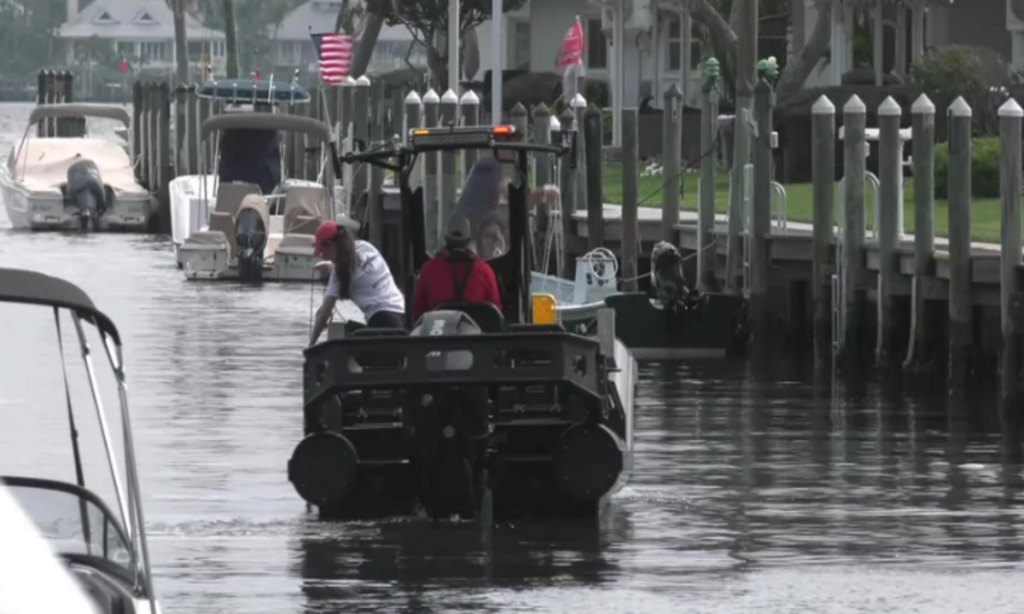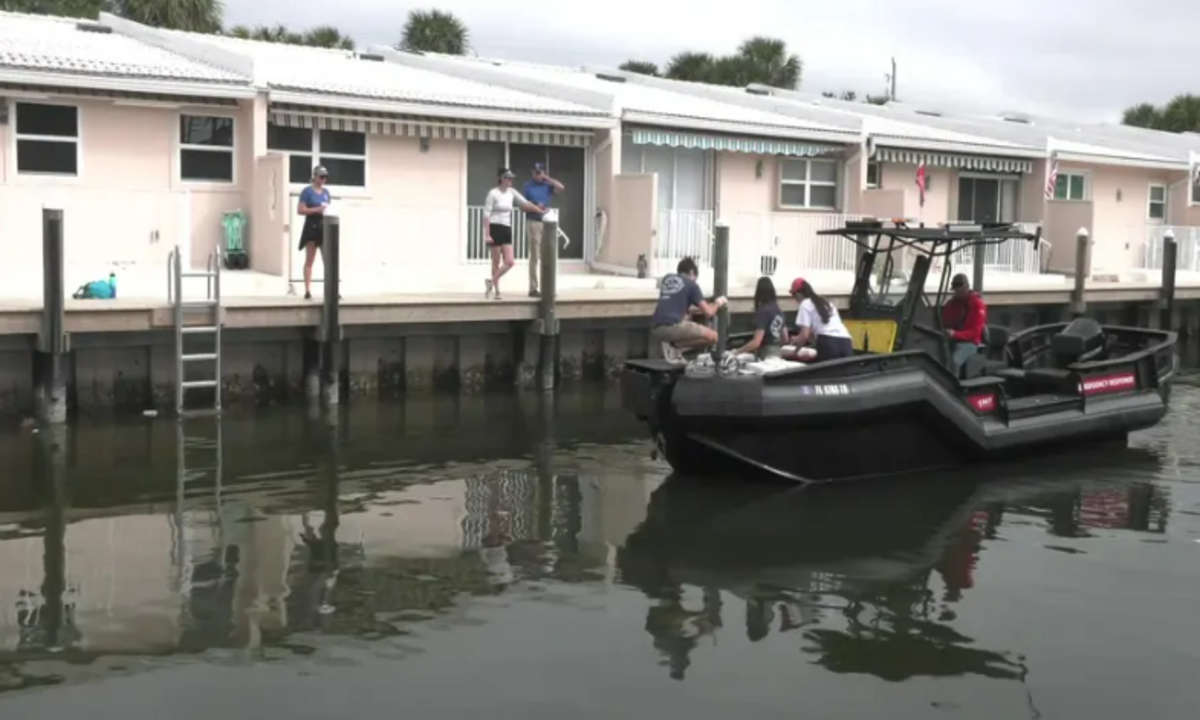Venice, Fla. – Scientists at Mote Marine Laboratory have achieved a significant breakthrough in fighting red tide, a toxic algal bloom that has plagued Florida’s waters for years.
After five years of dedicated research and rigorous testing, the laboratory successfully deployed two innovative treatments in Venice’s canals. The results? A 70% kill rate of Karenia brevis, the harmful algae responsible for red tide.
The development marks a major step forward in controlling red tide, which causes dead fish, respiratory issues, and severe environmental damage. Local residents, who have long suffered from the effects of red tide, are hopeful that this technology can bring relief.
How Red Tide Affects the Community
For many in Venice and surrounding coastal areas, red tide has made life miserable. The toxic algae release airborne irritants, causing coughing, sneezing, and breathing difficulties for residents. Dead fish floating in canals create a foul smell that forces people indoors, making it nearly impossible to enjoy Florida’s beautiful coastlines.
“It was unbearable to sit outside on my patio,” said a local resident, describing the severe impact of red tide.
Coastal businesses, particularly those dependent on tourism and fishing, suffer heavy losses during severe red tide outbreaks. Restaurants, boat tours, and beachside hotels see fewer customers, leading to millions of dollars in economic damage each year.
Mote Marine’s Groundbreaking Solution
Mote Marine Laboratory’s scientists, including Dr. Dana Wetzel and Dr. Richard Pierce, worked alongside the Heartland Energy Group to develop two plant-based compounds named Clear and Xtreme.
These compounds are designed to suppress the algae without harming the ecosystem. To ensure safe and effective deployment, Mote partnered with a company that specializes in oil spill and hazardous waste cleanup.
How the Treatment Works
The two natural, plant-based compounds are introduced into the water using a special deployment mechanism. Once in the water, they target and reduce the levels of Karenia brevis, significantly weakening the algae’s toxic effects.
After extensive testing, the results were clear:
A 70% reduction in harmful algae levels was observed.
The treatment did not cause additional environmental harm.
The technology successfully reduced toxins in the air, making the surroundings more livable.
What’s Next? Scaling Up the Efforts
Despite this success, Mote’s mission is far from over. Scientists emphasize that the treatment must be scaled up to tackle larger, more widespread blooms.
“This won’t be a success if we can only do a canal or two. We have to view this more like a military operation—deploying these methods wherever red tide appears,” said Dr. Michael Crosby, President and CEO of Mote Marine Laboratory.
Mote Marine is now working with the Environmental Protection Agency (EPA) to get approval for broader use of these treatments. If approved, the technology could be deployed on a larger scale, targeting red tide outbreaks in the open ocean.
Why This Research Matters
For years, Florida residents have struggled with red tide, a natural phenomenon worsened by pollution and climate change. Previous attempts to control the algae included chemical treatments, but many solutions risked harming marine life.
Mote’s breakthrough offers a safe, effective, and eco-friendly alternative that could significantly reduce the impact of red tide in the coming years.
How Residents Can Help
While scientists continue their work, Florida residents can also play a role in preventing red tide from worsening:
Reduce Fertilizer Use – Excess nutrients from lawn fertilizers feed algae blooms, making red tide stronger.
Properly Dispose of Waste – Avoid dumping chemicals, pet waste, or trash into storm drains.
Stay Informed – Follow updates from Mote Marine Laboratory and local environmental agencies.
Looking Ahead: A Future Without Red Tide?
Although completely eliminating red tide is impossible, Mote’s research offers a real chance to control and reduce its harmful effects. If the upcoming trials are successful, Florida could see a future where red tide no longer disrupts communities, tourism, and marine life.
For now, all eyes are on the EPA’s approval process. If cleared for widespread use, this technology could be the game-changer Florida has been waiting for.
Disclaimer—Our team has checked this article to ensure its accuracy and eliminate any misinformation. We are committed to providing clear and reliable information for our readers.


